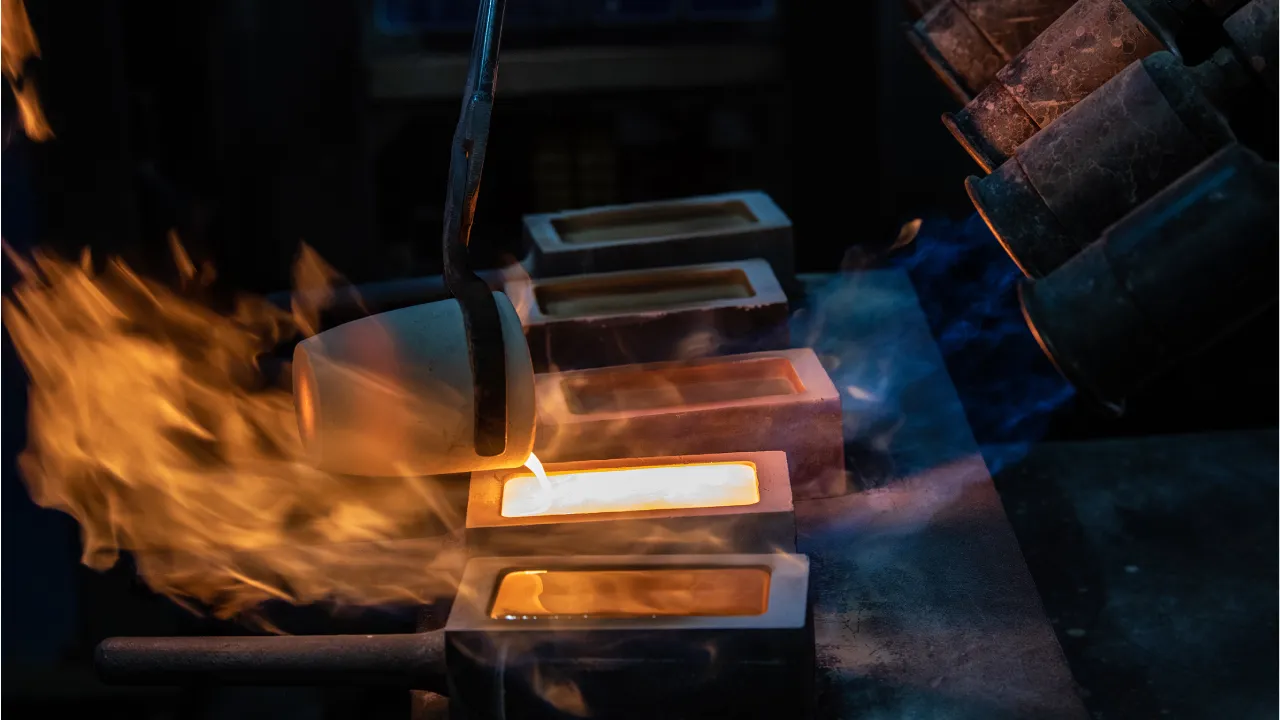The Role of Soda Ash in Metal Refining

Descriptions of Soda Ash
Soda ash, also known as sodium carbonate (Na₂CO₃), is a crucial industrial chemical widely used in metal refining processes. Its unique chemical properties, including alkalinity, solubility, and reactivity with metal oxides, make it indispensable for extracting and purifying metals from their ores. From aluminum production to precious metals like gold and silver, soda ash plays a significant role in modern metallurgy.
In this educational article, we will explore how soda ash is applied in metal refining, its chemical properties, benefits, applications, and best practices for handling and storage.
What is Soda Ash?
Soda ash is a white, crystalline powder with high alkalinity and water solubility. It exists in two forms: light soda ash (used in detergents and water treatment) and dense soda ash (used in industrial processes such as metal refining). Chemically, soda ash reacts with acidic metal oxides to form soluble compounds, making it a vital reagent in refining operations.
Key properties of soda ash:
-
High alkalinity
-
Soluble in water
-
Reacts with acidic impurities
-
Stable under normal storage conditions
Soda Ash in Metal Refining
1. Aluminum Refining
In the alumina-to-aluminum extraction process, soda ash is used to remove impurities from bauxite ore. During refining, sodium carbonate reacts with aluminum oxide and other metallic oxides, forming soluble complexes. This alkaline leaching ensures a purer alumina product, which is essential for electrolytic aluminum production.
Benefits of aluminum refining:
-
Removes silica and iron oxides effectively
-
Enhances aluminum yield
-
Reduces energy consumption in electrolysis
2. Copper Smelting and Refining
Soda ash plays a role in copper smelting by neutralizing acidic impurities in ores. It reacts with sulfur and arsenic compounds to form soluble sodium salts, which can be removed easily during refining. This process improves the purity and conductivity of the final copper product.
Benefits of copper refining:
-
Reduces sulfur and arsenic content
-
Enhances metal quality
-
Improves smelting efficiency
3. Precious Metals Refining
In refining gold, silver, and platinum, soda ash is used in flux formulations. Fluxes are mixtures that promote melting and impurity removal. Soda ash lowers the melting point of metallic oxides, allowing easy separation of slag from molten metal. This method is crucial in jewelry and high-purity metal production.
Advantages:
-
Improves recovery rates of precious metals
-
Produces high-purity metals for industrial and jewelry use
-
Facilitates slag formation and removal
4. Iron and Steel Industry
Soda ash is used as a descaling and fluxing agent in steelmaking. It reacts with sulfur and phosphorus impurities in iron ores, forming slag compounds that can be removed. This helps produce high-quality steel with improved mechanical properties.
Benefits:
-
Removes sulfur and phosphorus effectively
-
Enhances steel quality
-
Reduces corrosion and brittleness in finished products
How Soda Ash Works in Metal Refining
Soda ash functions primarily by:
-
Neutralizing acidic oxides: Many metal ores contain silica (SiO₂), alumina (Al₂O₃), and other oxides. Soda ash reacts with these to form soluble sodium silicates or aluminates.
-
Forming slag with impurities: In smelting, soda ash combines with oxides and other impurities to form easily removable slag.
-
Enhancing metal recovery: By binding impurities, soda ash allows metals to be separated efficiently, increasing yield and purity.
LSI Keywords incorporated naturally: alkaline flux, slag formation, metal purification, sodium carbonate, ore processing, industrial chemistry.
Benefits of Using Soda Ash in Metal Refining
-
Improves Metal Purity: Soda ash ensures the removal of oxides and other impurities.
-
Reduces Production Costs: Efficient impurity removal reduces energy usage and processing time.
-
Eco-Friendly: When handled responsibly, soda ash reduces the need for harsh acidic chemicals.
-
Versatile: Applicable to aluminum, copper, precious metals, and steel refining.
Handling and Storage of Soda Ash
Soda ash is generally safe to handle, but industrial safety protocols should always be followed:
-
Store in dry, ventilated areas to prevent moisture absorption.
-
Avoid contact with skin and eyes, as it is highly alkaline.
-
Use protective equipment like gloves, goggles, and masks when handling powder.
-
Keep away from strong acids, as a reaction may produce heat and harmful fumes.
Conclusion
Soda ash is an essential chemical in metal refining, offering unparalleled benefits in impurity removal, slag formation, and metal recovery. Its applications span from aluminum production to precious metals and steel refining, making it a cornerstone of modern industrial metallurgy.
By understanding its chemical behavior, handling procedures, and applications, industries can optimize metal purity, improve yields, and ensure cost-effective production.

